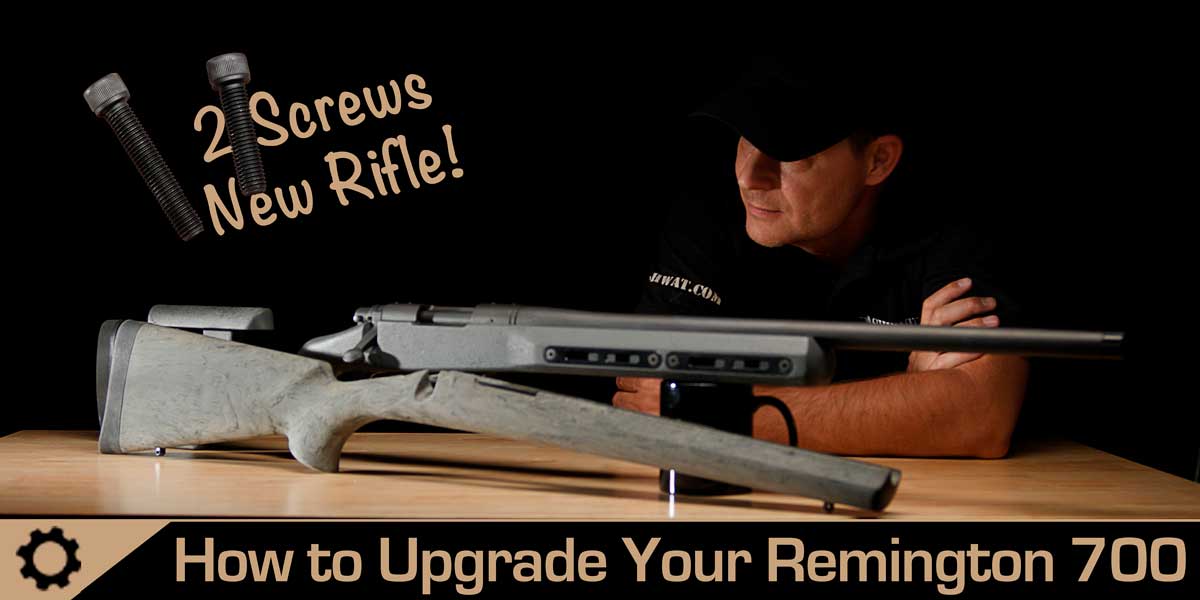 Two screws and you can transform your Remington 700’s accuracy, features and looks with a new stock. Upgrading your 700 stock is so simple, even a cave kid could do it (though a torque wrench comes in pretty handy). When you’ve watched our how to change your stock video, you’ll know. But for those of you quietly sneaking this read in on public toilet or clandestinely at work, you can follow along here.
Two screws and you can transform your Remington 700’s accuracy, features and looks with a new stock. Upgrading your 700 stock is so simple, even a cave kid could do it (though a torque wrench comes in pretty handy). When you’ve watched our how to change your stock video, you’ll know. But for those of you quietly sneaking this read in on public toilet or clandestinely at work, you can follow along here.
Why Change Your Remington 700 Stock?
How about getting better accuracy? Remington 700 rifles and the myriad of excellent clones make solid long range guns. Or short range. Either way, your stock may leave something to be desired. Check out the upgraded Houge stock in the picture below.
With a little pressure from my hand I can easily flex the stock. Imagine how much flex can happen as the rifle recoils! Where might your barrel be pointed as the stock flexes?
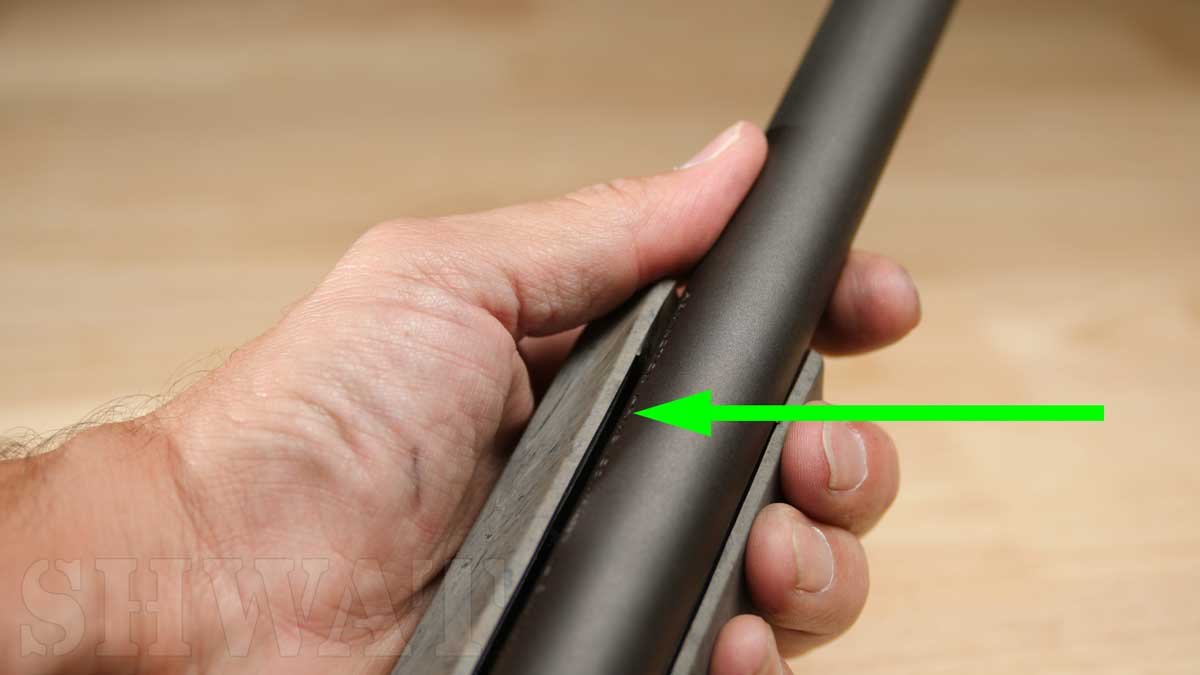
While this isn’t a Grayboe Ridgeback review per se, it is the stock I chose for this upgrade. You can find David Bahde’s first look here: Grayboe – Is This the Rifle Stock You’ve Been Waiting For? The Grayboe is a LOT stiffer, so less flex under recoil nets improved accuracy.
Installing a new stock on your Remington 700 can add functionality. In this case, the Grayboe’s fore-end gives us M-LOK rails at 3, 6 and 9 o’clock and a flat base for shooting off bags and barriers. We get a vertical pistol grip and adjustable cheek rest for ergos, a hood for stabilizing with bags, adjustable length of pull and recoil pad. You get the point, changing you 700’s stock can add a ton of functionality. I almost forget – Graybe puts a bubble level in the stock!
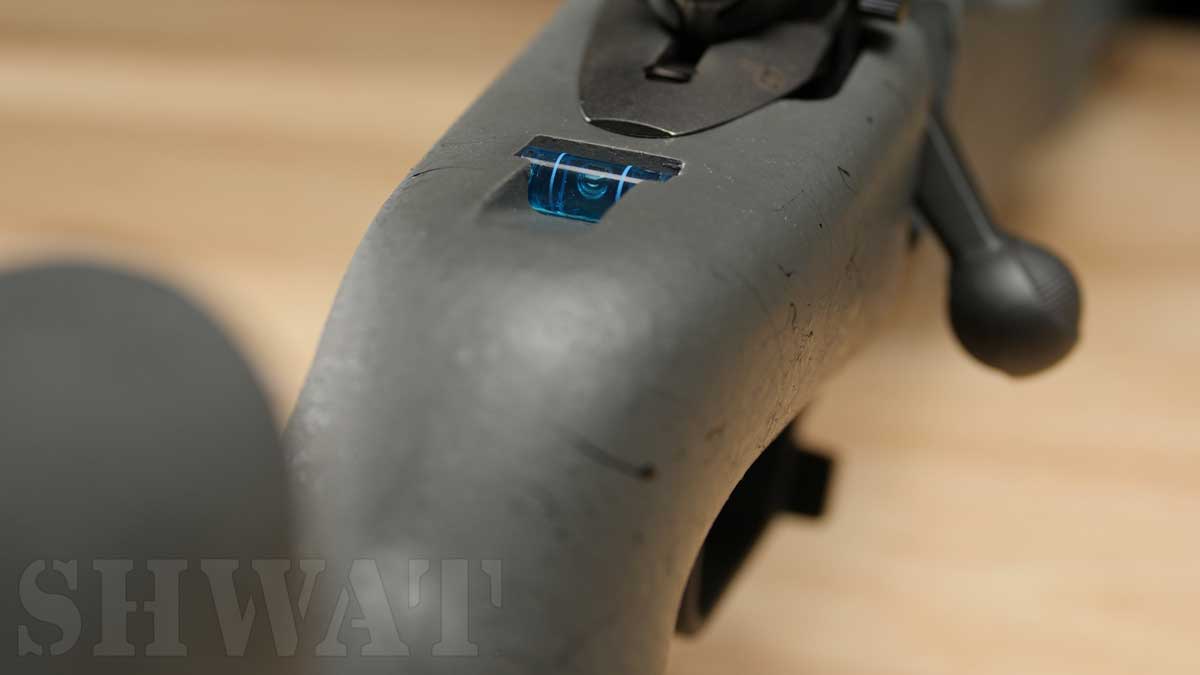
Making sure your cant is correct before pulling the trigger is easy with the bubble level integrated into the Grayboe stock.
And we have to talk looks. Sure, it’s subjective, but with so many great looking Remington 700 stocks on the market now no one is seriously going to overlook this. Our 700 arrived in a arguably good looking Hogue stock. It has that nice Houge feed, super grippy. But compared to to the Grayboe Ridgeback, well, to my eyes it’s not in the same league.

Get the mug and more at SHWAToutfitters.com!
How to Change Your Remington 700 Stock
Now that we know why we want to change our 700 stock, let’s talk about how. It’s super simple – with a mere two screws to manage, take it apart and put it back together. End of story.
Well, almost.
First, make sure rifle is unloaded. I know, you already know it’s unloaded. Trust me, it’s a good habit. A friend who’s bolt gun always sits unloaded somehow got discharged in a warehouse full of people. No one got hurt as the other cardinal rules were followed, but just note to self, always check.
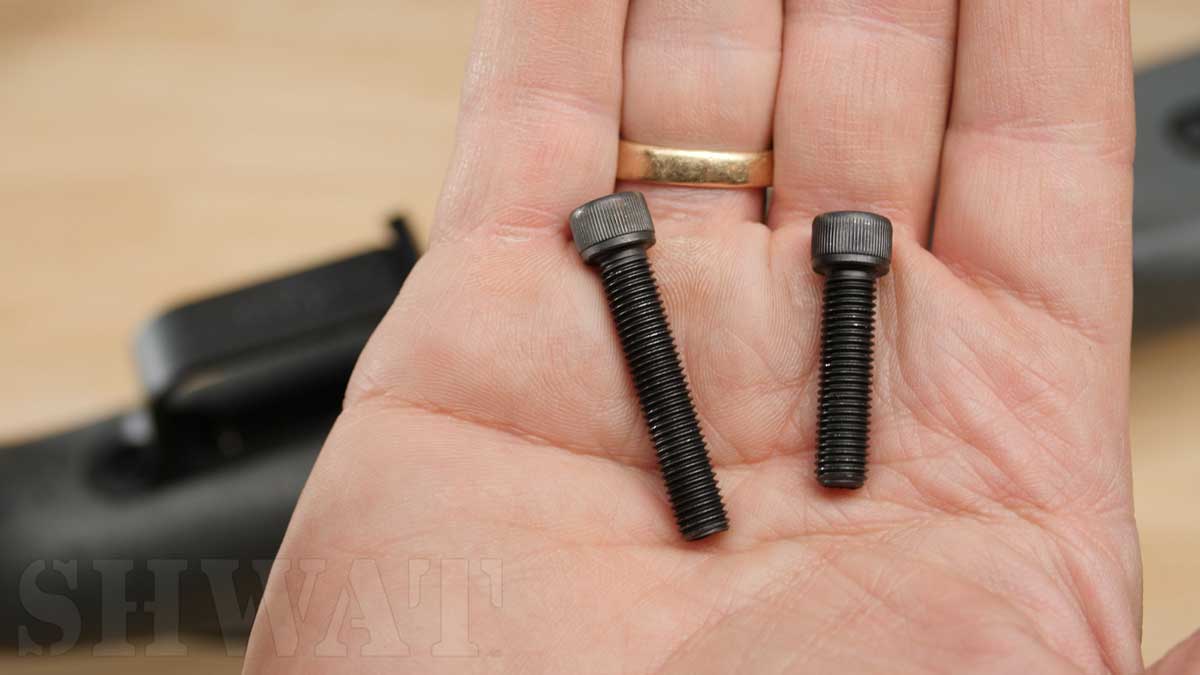
The short screw goes up front when you reassemble
Now that we know safety wins the day, flip your 700 over to access the guard screws. Remove them while holding the floor plate in place. No floor plate? No worries.
Your barreled action should drop free from the stock now. Easy, right? Line up the recoil lug with the slot on the 700 replacement stock, replace the bottom metal and magazine from the other side and put the screws back in. Done.

Oh yeah! It’s not the lightest stock, but that’s not why I chose it! It’s not the heaviest either, and the point of this picture is simply the amazing looks of a Ridgeback stocked basic Remington 700!
But I wanted to add box magazine functionality to this rifle. Like Remington 700 stocks you can buy bottom metal from a myriad of makers. Grayboe sells it, so why not use theirs while I’m changing the stock? If you go that route, be sure you use their screws as I explain in the video. I confess, I missed that important detail on the first round. Why read directions when we have videos?
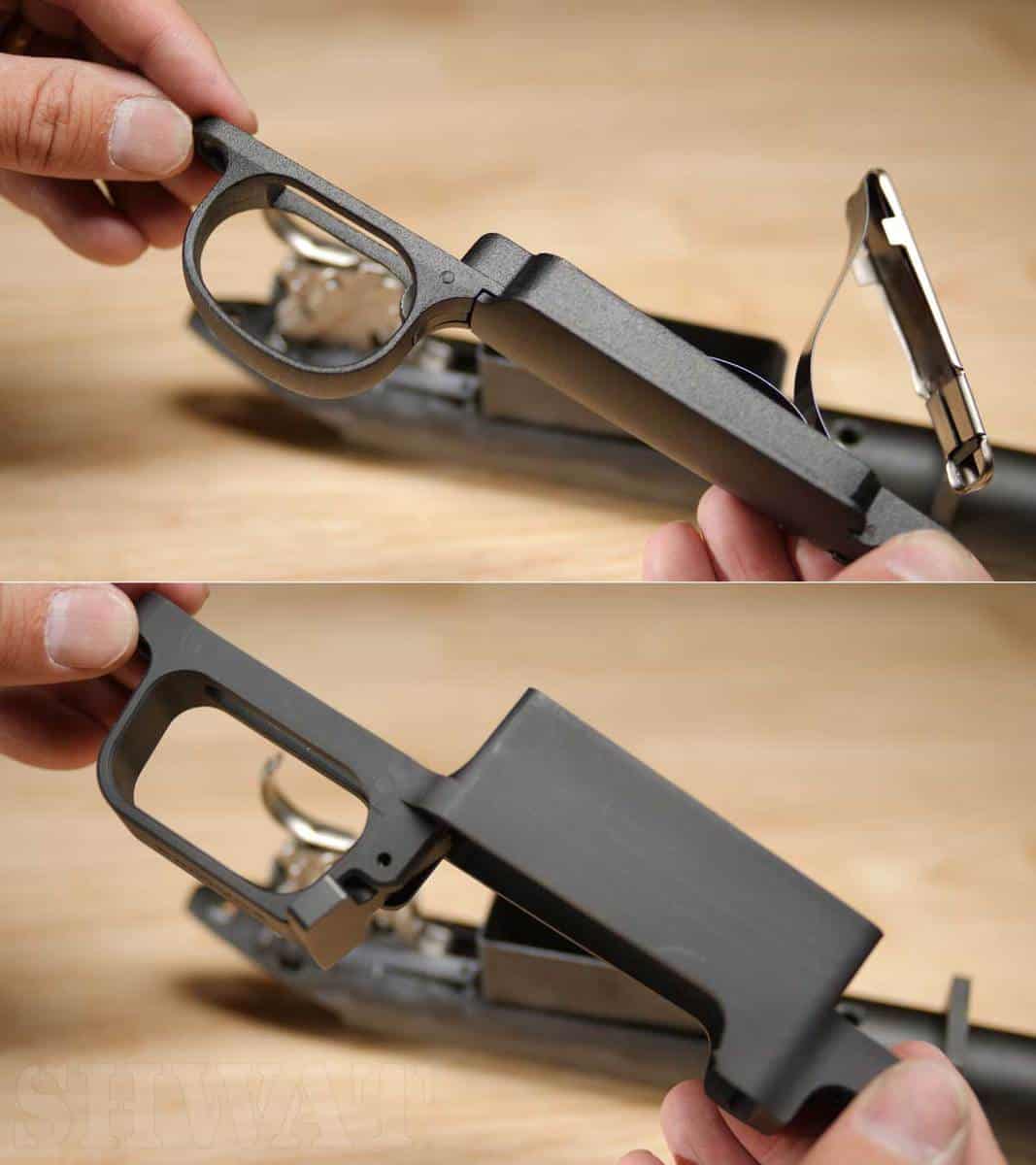
Not only does the Grayboe bottom metal add box magazine feeding it also looks a lot more aggressive than the the standard stuff from the factory.
It installs just like the factory one.
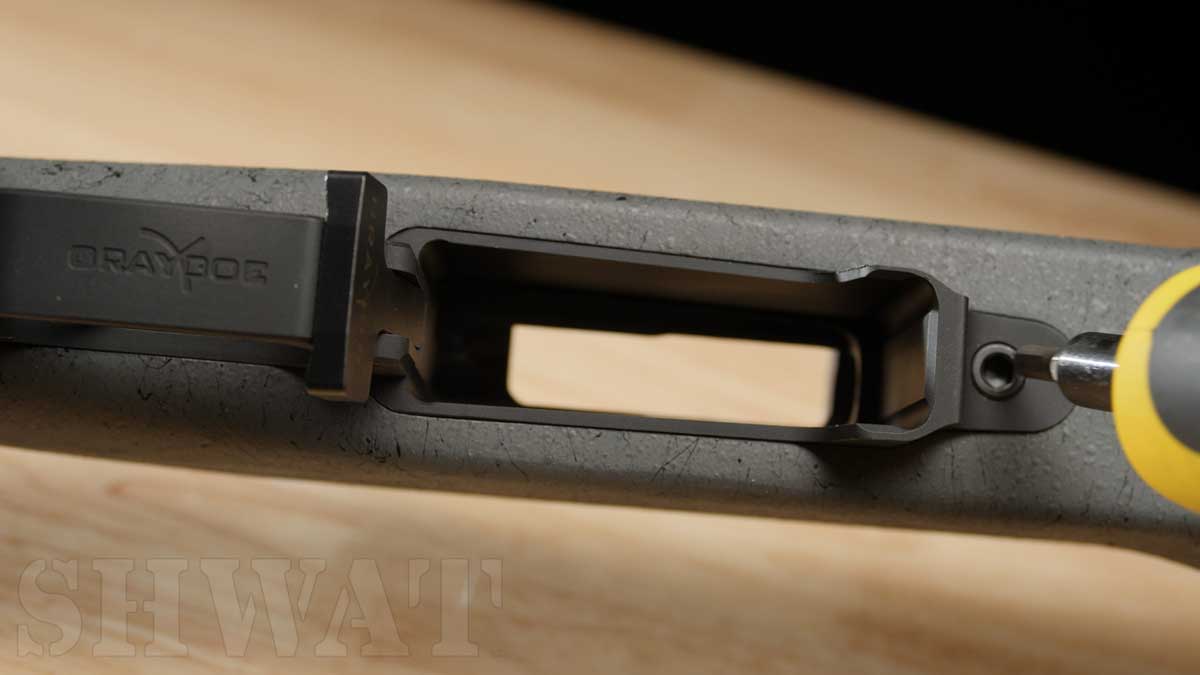
This is where your torque wrench comes in handy. The magic number is 65 inch pounds.
That’s it! Two screws, new rifle! Now that you know how easy it is to change your Remington 700 stock, have fun shopping! The variety of options, features and price points might blow your mind, but installing a new stock certainly won’t. And now for the video, which I highly recommend (pardon the bias, but I think it’s pretty great). What stock would you pick? Tell us in the comments below, no login required.


I am assuming that accuracy and shot repeatability are the key goals in a restock proposition. I am not a counter-revolutionary and I am not against the new grain movements but I am old school and there is nothing but nothing that beats a laminated stock with a glass-bonded bed for the whole receiver and barrel assembly under a quality barrel that is turned to a heavier contour than usual. It is stiffer, straighter, and consistently puts those holes on a dime 20 times in a row. No hog will need 20 holes. No matter how warty or mean he is.